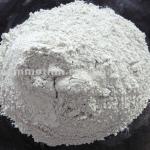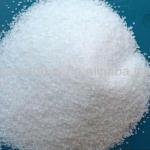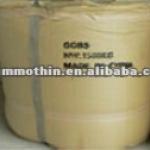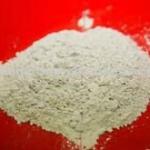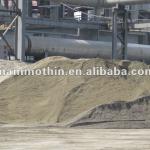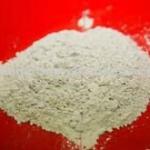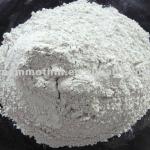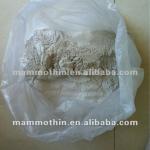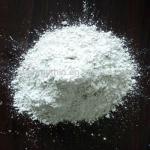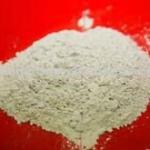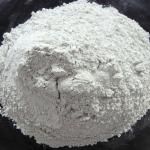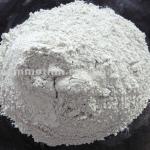Low Carbon Cement (GGBS)
Emissions from Ordinary Portland Cement and Low Carbon Cement (GGBS) Production - details see: https://www.buildingsupplieshub.com/low-carbon-cement-ggbs-10085807
| Type: Slag |
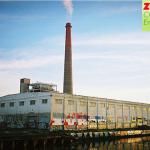
| Description: Emissions from Ordinary Portland Cement and Low Carbon Cement (GGBS) Production CO2 is acknowledged as a major contributor to climate change. In Ireland, ordinary Portland cement manufacture is the second largest industrial source of CO2 and NOX emissions, after the generation of electricity from fossil fuels. In addition, about one fifth of all dioxin emissions from industry in Ireland arise from cement production. However the production of GGBS from blastfurnace slag, an industrial by-product, generates very low CO2 emissions, and zero emissions of other pollutants. Production and use of GGBS Ground granulated blast furnace slag (GGBS) is manufactured from blast furnace slag, a by-product from the making of iron. The cementitious properties of blastfurnace slag were discovered in the late 19th century and it has been widely used in cement manufacture for over 100 years. In the UK, GGBS is supplied as a separate component for concrete and is added at the concrete mixer. It generally replaces between 20 and 80 per cent of the normal Portland cement. Production of iron blast furnace slag The blast furnaces used to make iron operate at temperatures up to 2000°C and are fed with a carefully controlled mixture of iron ore, coke and limestone. The iron ore converts to iron which sinks to the bottom of the furnace. The remaining materials form a slag that floats on top of the iron. The molten iron and slag are drawn off at regular intervals through tapping holes in the base of the furnace. As the slag is drawn off, its chemistry is monitored as a check on the performance of the furnace. This ensures that blast furnace slag is very consistent in chemical composition. After being tapped from the furnace and separated from the iron, the slag is cooled. The cooling rate of the molten slag determines its physical characteristics. If the material is left to gradually air-cool, it is of no use as a cementitious material and is used as an aggregate. Where the blast furnace slag is to be used for the manufacture of GGBS, it has to be rapidly quenched in water. This process is known as granulation because it produces glassy granules, similar in appearance to a coarse sand. These have excellent cementitious properties. Environmental Benefit The use of cement replacements with lower environmental burdens offers opportunities for significant reductions in energy use and carbon dioxide emissions. The most effective alternative to Portland cement is ground granulated blast furnace slag (GGBS), which typically replaces 50 per cent of the Portland cement in a concrete mix. Greater proportions of up to 70 or even 80 per cent,can be used with advantage in suitable situations. The benefits of using GGBS in concrete: 1 Saves energy 2 Reduces emissions of carbon dioxide 3 Conserves natural resources. GGBS and concrete properties On its own, ground granulated blast furnace slag (GGBS) hardens very slowly and, for use in concrete, it needs to be activated by combining it with Portland cement. A typical combination is 50 per cent GGBS with 50 per cent Portland cement, but percentages of GGBS anywhere between 20 and 80 per cent are commonly used. The greater the percentage of GGBS, the greater will be the effect on concrete properties. Setting times The setting time of concrete is influenced by many factors, in particular temperature and water/cement ratio. With GGBS, the setting time will be extended slightly, perhaps by about 30 minutes. The effect will be more pronounced at high levels of GGBS and/or low temperatures. An extended setting time is advantageous in that the concrete will remain workable longer and there will be less risk of cold joints. This is particularly useful in warm weather. Water demand The differences in rheological behaviour between GGBS and Portland cement may enable a small reduction in water content to achieve equivalent consistence class. Consistence While concretes containing GGBS have a similar, or slightly improved consistence to equivalent Portland cement concretes, fresh concrete containing GGBS tends to require less energy for movement. This makes it easier to place and compact, especially when pumping or using mechanical vibration. In addition, it will retain its workability for longer. Early age temperature rise The reactions involved in the setting and hardening of concrete generate significant heat and can produce large temperature rises, particularly in thick-section pours. This can result in thermal cracking. Replacing Portland cement with GGBS reduces the temperature rise and helps to avoid early-age thermal cracking. There are a number of factors which determine the rate of heat development and the maximum temperature rise. These include the percentage of GGBS, the total cementitious content, the dimensions of the structure, the type of formwork and ambient weather conditions. The greater the percentage of GGBS, the lower will be the rate at which heat is developed and the smaller the maximum temperature rise. As well as depressing the peak temperature, the time taken to reach the peak will be extended. For mass concrete structures, it is common to use 70 per cent GGBS to control the temperature rise. With thinner sections, significant savings in crack control reinforcement can be achieved even with lower levels of GGBS of 50 per cent or less. Strength gain in GGBS concrete With the same content of cementitious material (the total weight of Portland cement plus GGBS), similar 28-day strengths to Portland cement will normally be achieved when using up to 50 per cent GGBS. At higher GGBS percentages the cementitious content may need to be increased to achieve equivalent 28-day strength. GGBS concrete gains strength more steadily than equivalent concrete made with Portland cement. For the same 28-day strength, a GGBS concrete will have lower strength at early ages but its long-term strength will be greater. The reduction in early-strength will be most noticeable at high GGBS levels and low temperatures. Under normal circumstances, concretes with up to 70 per cent GGBS will achieve sufficient strength within one day of casting to allow removal of vertical formwork without mechanical damage. At high GGBS percentages, extra care should be taken with thin sections poured during winter conditions when the concrete hardening may have been affected by the cold ambient air. Colour Ground granulated blast furnace slag is off-white in colour and substantially lighter than Portland cement. This whiter colour is also seen in concrete made with GGBS, especially at addition rates of 50 per cent and above. The more aesthetically pleasing appearance of GGBS concrete can help soften the visual impact of large structures such as bridges and retaining walls. For coloured concrete, the pigment requirements are often reduced with GGBS and the colours are brighter. GGBS and durability Concrete containing ground granulated blast furnace slag (GGBS) is less permeable and chemically more stable than normal concrete. This enhances its resistance to many forms of deleterious attack, in particular: 1 Disintegration due to sulfate attack 2 Chloride-related corrosion of reinforcement 3 Cracking caused by alkali-silica reaction |



